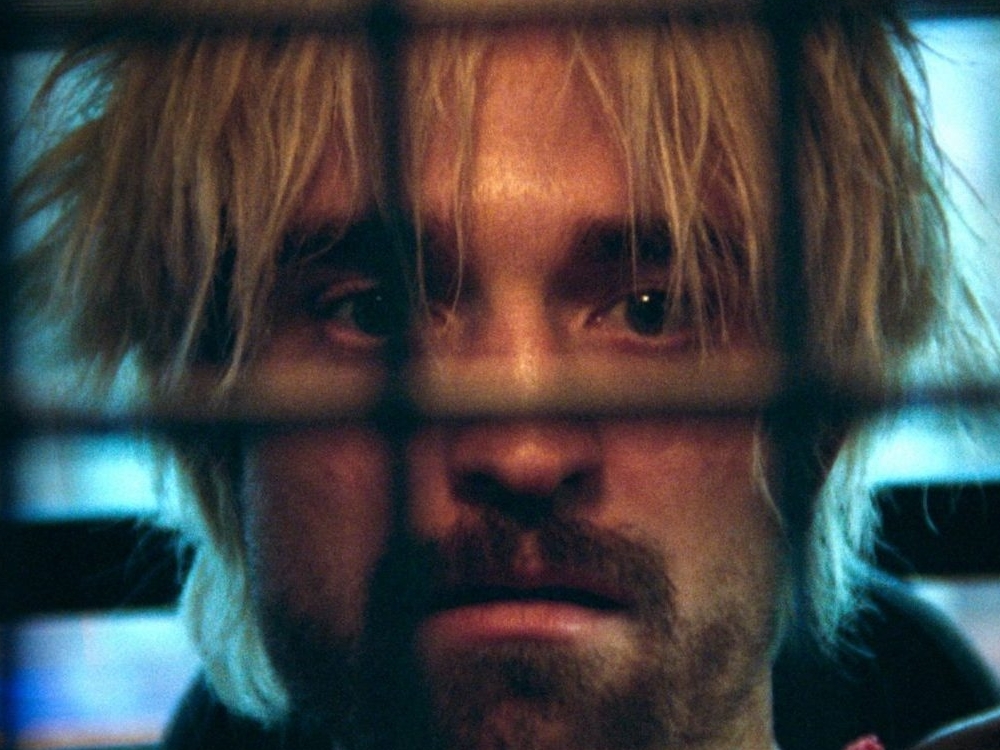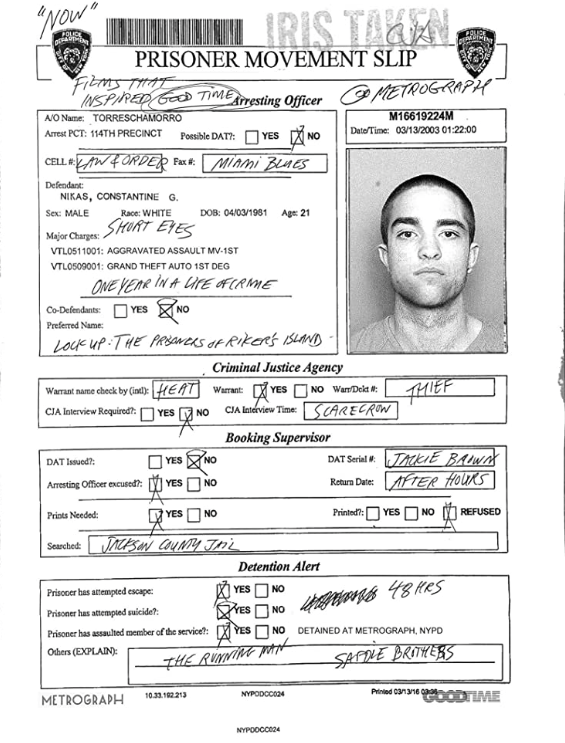
Connie Nikas finds his brother Nick taken to jail after a screwed up bank robbery. To get him out, he has to face the dimly lit streets of New York City’s underworld.
“I thought I was going to look a lot trendier than I did.”
Robert Pattinson1
“It’s mean, all right–also myopic, pitiless, and deliberately ugly, and it leaves you with no moral. I like it a lot.”
Stuart Klawans2
“Good Time is a New York City movie. Being a New York City movie is something very distinct from just being a movie set in New York, which every other recent American film seems to be. When it comes to grounding the narrative in the geographical, political, historical and demographic reality of the five boroughs of the city, however, most films go about as far as an establishing drone shot of the Manhattan skyline. New Yorkers born and raised, the Safdies have always shown deeper interest in capturing the finer shadings of local colour.”
Nick Pinkerton3
“Pattinson’s Connie is on a bad trip, and so is the movie–except that it’s so kinetic and exciting to look at and listen to that you just go with it without worrying that you’ll be wrecked in the morning. Its saving grace–besides the riotous beauty of Sean Price Williams’s 35-mm widescreen neon-streaked mega-moving images and a propulsive techno score by Oneohtrix Point Never (Daniel Lopatin), made more immersive by Benny Safdie and Evan Mangiamele’s sound design—is the Safdies’ commitment to showing us the people and places of a marginal New York. Good Time is set almost entirely in a single twenty-four-hour period, and its accelerating dive-toward-doom trajectory [...] resembles nothing so much as Martin Scorsese’s 1985 After Hours, albeit Connie is a lot closer to Robert De Niro’s Johnny Boy in Mean Streets (1972) than to Griffin Dunne’s uptown nebbish terrorized by cool and/or crazy Tribeca women. The Safdies know their New York pulp movies, so it’s no wonder that Good Time is being compared to early Scorsese and to Sidney Lumet’s Dog Day Afternoon (1975). To those I’d add Nick Gomez’s unforgettable 1992 no-budget indie debut, Laws of Gravity, which has Peter Greene and Adam Trese as wannabe felons every bit as hapless as Connie and handheld cinematography by Jean de Segonzac that is as vertiginous as Williams’s. [...] This is the Safdies’ biggest movie, and while the budget allowed them to work with the magnetic and gifted Pattinson and to shoot in an array of complex locations, they also held fast to their guerrilla filmmaking method. The outer boroughs of New York have rarely been shown as realistically and phantasmagorically within a single movie. It is the city of millions of people who live on the economic margins and try to stay sane and safe while keeping out of the way of the desperate in their midst–people like Connie, whose nightmares twist his perceptions and make him incapable of having a good time or gifting his brother with a better life. Nevertheless, he’s more to be pitied than despised. The Safdies give the last word to Iggy Pop, in a song he wrote for Good Time. That word is ‘love.’”
Amy Taubin4

- 1“How Twilight star Robert Pattinson went undercover for Good Time to shoot his grittiest role yet,” South China Morning Post, 17 August 2017.
- 2“A Pitiless Heist Movie,” The Nation, 18 August 2017.
- 3Nick Pinkerton, “A Thief in the Night,” Sight & Sound, December 2017.
- 4Amy Taubin, “Runs in the Family. Amy Taubin on the Safdie brothers’ Good Time,” Art Forum, 14 August 2017.

